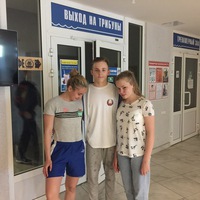
Рефлексы возникающие для поддержания позы при движении называются?
 0
0
 0
0
Ответы на вопрос
 Внимание! Ответы на вопросы дают живые люди. Они могут содержать ошибочную информацию, заблуждения, а также ответы могут быть сгенерированы нейросетями. Будьте внимательны. Если вы уверены, что ответ неверный, нажмите кнопку "Пожаловаться" под ответом.
Внимание! Ответы на вопросы дают живые люди. Они могут содержать ошибочную информацию, заблуждения, а также ответы могут быть сгенерированы нейросетями. Будьте внимательны. Если вы уверены, что ответ неверный, нажмите кнопку "Пожаловаться" под ответом.

Ответ:
Эти рефлексы называются статокинетические
 0
0
 0
0

Ответ:
Безусовные
Объяснение:
Безусловные рефлексы (врожденные рефлексы) — постоянные врожденные реакции организма на определенные изменения окружающей среды, осуществляемые при участии нервной системы и не требующие специальных условий для своего возникновения.
 0
0
 0
0

Reflexes for Maintaining Posture During Movement
Reflexes that occur to maintain posture during movement are known as postural reflexes. These reflexes help us maintain our balance and stability while performing various activities such as walking, running, or reaching for an object.
Postural reflexes involve the coordination of sensory input from various sources, such as the vestibular system (which provides information about the position and movement of the head), proprioceptors (which provide information about the position and movement of the body), and visual input. These sensory inputs are processed by the central nervous system, which then generates appropriate motor responses to maintain balance and posture.
Some of the key postural reflexes involved in maintaining posture during movement include:
1. Vestibulo-ocular reflex (VOR): This reflex helps stabilize the eyes during head movements to maintain clear vision. When the head moves, the VOR generates eye movements in the opposite direction to compensate for the head movement and keep the visual field stable.
2. Vestibulospinal reflex (VSR): This reflex helps maintain balance and posture by adjusting muscle tone and activating muscles in response to changes in head position or movement. The VSR works in conjunction with other postural reflexes to ensure stability during movement.
3. Tonic neck reflexes: These reflexes are activated by changes in head position and involve the coordination of neck and trunk muscles to maintain balance and posture. For example, the asymmetric tonic neck reflex (ATNR) causes extension of the arm and leg on the side of the head turn and flexion of the arm and leg on the opposite side.
4. Labyrinthine reflex: This reflex is mediated by the vestibular system and helps maintain balance and posture by adjusting muscle tone and activating muscles in response to changes in head position or movement.
5. Stretch reflexes: These reflexes are activated by stretching of muscles and involve the contraction of the stretched muscle to maintain posture and stability. For example, the patellar reflex (knee-jerk reflex) is a stretch reflex that helps maintain stability during standing and walking.
It is important to note that these reflexes work together in a coordinated manner to maintain posture and stability during movement. They are automatic and involuntary, allowing us to perform various activities without consciously thinking about maintaining our balance.
Sources: -() -() -() -() -() -() -() -() -() -()
 0
0
 0
0
Похожие вопросы
Топ вопросов за вчера в категории Биология
Последние заданные вопросы в категории Биология
-
Математика
-
Литература
-
Алгебра
-
Русский язык
-
Геометрия
-
Английский язык
-
Химия
-
Физика
-
Биология
-
Другие предметы
-
История
-
Обществознание
-
Окружающий мир
-
География
-
Українська мова
-
Информатика
-
Українська література
-
Қазақ тiлi
-
Экономика
-
Музыка
-
Право
-
Беларуская мова
-
Французский язык
-
Немецкий язык
-
МХК
-
ОБЖ
-
Психология
-
Физкультура и спорт
-
Астрономия
-
Кыргыз тили
-
Оʻzbek tili


























